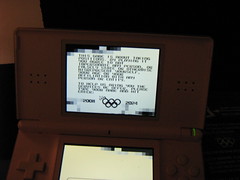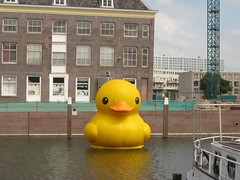Ok, so…the creative industries. I must say that so far I have not heard one good thing about the plan to change to this model, and Sher was no exception. She feels the added bureaucracy will prevent any really interesting and original project from ever getting funded. While maybe this will push some artists into doing much more interesting work because they have no funding,but do have some freedom, in the meantime the money is going to some kind of domesticated, tamed crap.
The issue of tech becoming tame is interesting. Sher felt really strongly about that; how the ease with which we can now do things has eliminated the wonder people used to feel, and also made the practice of connecting online really routine, so that people don’t think about new possibilities, they just use it for pragmatic things. (Practice is really important for Sher, as I’ll get to later). To illustrate, I can compare something like google docs which numerous people edit a doc, even simultaneously, or that site (I forget the name of course) that let’s people kind of jam together and lay down musical tracks, to the tool Sher worked on for her PhD project at De Waag KeyWorx. The developers of this platform created a
Multi-User Cross Media Synthesizer – a distributed application that allows multiple players to generate, synthesize and process images, sounds and text within a shared realtime environment. As an instrument it allows communities of players to dynamically control and modify all aspects of digitized media in a collaborative performance.
and Sher described it as really exciting because you gave up control, couldn’t always tell what was going to happen or what would happen because keyworx would let other people change not just the media files that were being produced, but the actual functioning of the scripts that transformed the files, so it was a kind of live coding as well. (I think) Anyway, this tool really only makes sense for people who know some scripting or programming languages, so the availability of other tools that do much less but are much easier may stop artists (or whomever) from going as far as they could to learn a more flexible but also more difficult practice.
We also talked a bit about specific institutions and while I feel like maybe it’s gossipy, on the other hand, I think it’s informative so… I had suspected last summer that De Waag had really moved away from an art focus to a much more creative industry kind of focus, yet they were still applying for art funding, and also in site of having some massive budget already (not sure where their other money comes from). –This is what I have gleaned from numerous conversations, but of course what defines an “art focus” is debatable. V2_ on the other hand has become really hermetic and narrowly focused, (again, this is what I thought last summer when Alex told me he wasn’t really interested in outreach at all, and it seems to have been an issue for them this year. It’s also problematic (I think) in terms of how they participate in the scene because in the end they are just talking to themselves and not really participating in the development of new media in a way that affects or takes into account what anyone else is doing, or the socio-economic events going on around them.
Steim, I learned, has been around for ages and continues to do interesting things (don’t know as much about them) but they’ve never had enough money and don’t seem as well publicised (but maybe that’s because everyone already knows them?), which may also be why they have trouble. In fact, neither V2_ nor Steim seem to have communicated very clearly what they are contributing to the new media scene. –This is my sense because when I try to ask people about what they aim to do, I haven’t yet met anyone who says clearly “oh yes, they aim for this.”
–In fact since originally writing this I’ve emailed with Sher a bit more and she said that Steim is not actually interested in the new media scene, but rather is focused on instruments, interfaces and sound. Of course a group probably shouldn’t worry about explaining to people everything they are not concerned with, but on the other hand, many other people have said I should talk to some members of Steim, and seem to consider them part of the new media scene, so there really does seem to be some confusion. The conflicting perceptions of both the scene of what’s good for the scene or not are turning out to be really interesting. I think that I may end up with something like what one sees through a “dragonfly eye” rather than a single picture.
I mentioned Worm and Sher didn’t know them very well, but was interested in the kinds of things they’ve done, especially the collaborations with Piet Zwart–it’s funny but I find myself feeling the impulse to connect people I think would offer something good to each other, which seems to be a basic feature of this scene. I’ve seen Florian do it a lot, William Uricchio, Sher herself offered to help me contact people…I guess it really is very cooperative.
Finally, Sher spoke about a project she is working on right now with support from Brian Massumi and Erin Manning; it’s an artist’s residence, but her project is textual. She is trying to develop writing as an artistic practice and has evolved an approach that includes pasting texts and images onto an 8 meter scroll of paper everyday, taking pictures of that and reintegrating them on the scroll, cutting up the text, moving it around, and creating a kind of collage that represents the development of her ideas over time. Of course this immediately rang a bell because this process is very similar to things we have students do sometimes in the writing classes, but Sher is doing it in a much more sustained way, and also thinking more rigorously about it as a practice (or process, to use the comp. theory term). I’ll be interested to see where it takes her.
So yeah, a really dense interview, and probably there are things I’m forgetting right now. More than any of the other people, Sher had a clear sense of herself as a practitioner, always looking for a new challenge, always exploring and testing. Like many of the people, especially the women, she seemed to really enjoy taking a moment (or several hours) to speak about these things. I’m wondering if it’s because no one has really been interested before (which seems unlikely with Sher) or if being officially asked to reflect is somehow interesting… well, maybe that will become clearer as I go on.


